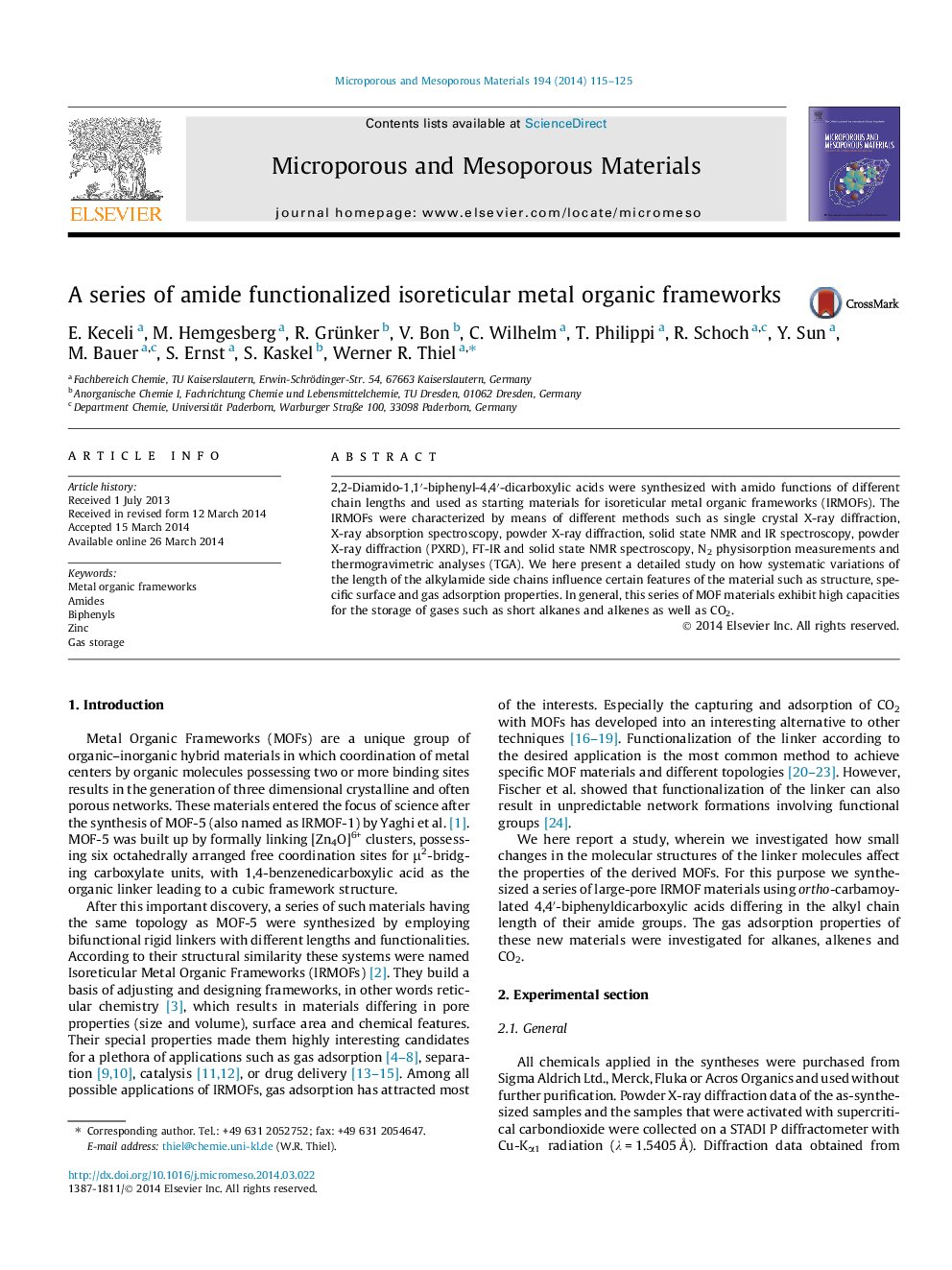| Article ID | Journal | Published Year | Pages | File Type |
|---|---|---|---|---|
| 73074 | Microporous and Mesoporous Materials | 2014 | 11 Pages |
•Synthesis of four 4,4′-biphenyl linkers equipped with amide groups of different chain lengths.•Synthesis of four amide functionalized MOFs with IRMOF-9 topology.•Characterization of the materials by BET, XRD, SEM, IR and NMR spectroscopy, TGA.•Evaluation of the gas storage properties of these materials (alkanes, alkenes, carbon dioxide).
2,2-Diamido-1,1′-biphenyl-4,4′-dicarboxylic acids were synthesized with amido functions of different chain lengths and used as starting materials for isoreticular metal organic frameworks (IRMOFs). The IRMOFs were characterized by means of different methods such as single crystal X-ray diffraction, X-ray absorption spectroscopy, powder X-ray diffraction, solid state NMR and IR spectroscopy, powder X-ray diffraction (PXRD), FT-IR and solid state NMR spectroscopy, N2 physisorption measurements and thermogravimetric analyses (TGA). We here present a detailed study on how systematic variations of the length of the alkylamide side chains influence certain features of the material such as structure, specific surface and gas adsorption properties. In general, this series of MOF materials exhibit high capacities for the storage of gases such as short alkanes and alkenes as well as CO2.
Graphical abstractFigure optionsDownload full-size imageDownload as PowerPoint slide
